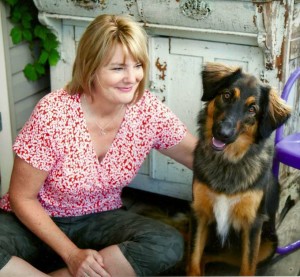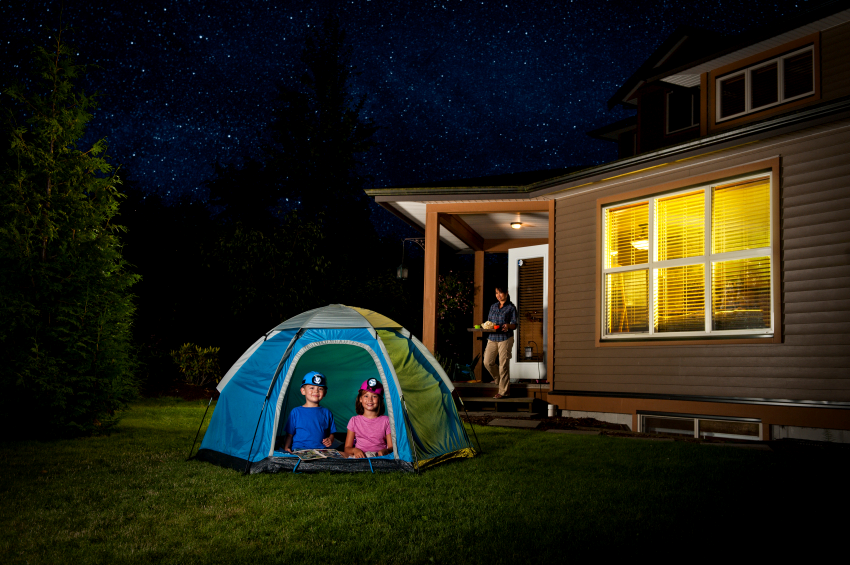A World of Books and Children
Search and enjoy 8 years of posts chock-filled with ideas from It’s OK Not to Share and beyond.
I'm back after a lovely, non-computer time this summer. We spent a lot of our time playing and traveling, including camping and playing with fire.
OK, I don't have tots anymore. My youngest is seven, and that's a wonderful age to play with fire. Yes, striking the match, building the fire, poking it and learning its power. Some days in our campsite or backyard he spent hours playing with fire.
Letting children work with fire has some risk, but it also helps keep them safe. After I trained my kids on basic safety and gauged their development, I was ready to take that risk.
Kids don't like to get hurt. They don't like pain, blood or owies and most kids avoid getting hurt at all costs. That's why giving them some training - and then giving them some risks - works so well.
Risk helps kids get involved in their own safety. It helps them understand real dangers and gauge their own physical limits. When kids have experience with handling risk, they actually grow safer - becoming less likely to take dangerous risks and more likely to understand their limits when dealing with reasonable risk.
Researchers have found that letting kids experience risk first-hand is the only way children learn how to judge danger. Whether it's crossing a street or adding a stick to the fire, we need to introduce risks to our children's lives.
What zany, somewhat risky things did you do this summer? Are you comfortable or nervous about risk? Do you think kids are getting enough risk?
New chapter about Risk coming in my new book It's OK to Go Up the Slide. Publication date: March 8, 2016.

All adults need time for books and friendship. This book combines both.
Be honest. How many of you busy folks and parents really take time for friendship these days?
Mardi Link's new memoir The Drummond Girls: A Story of Fierce Friendship Beyond Time and Change is all about the friendships we need in our adult lives. Her story may not be your story - her set of friends chase bears and drink on a remote island for their getaway - but the threads in her story are universal.
Mardi knows how to write. This is her 5th book, and her spunky, hysterical take on the world gets better all the time. It's the perfect book for book clubs. How a diverse group of women comes together and shares life over a twenty-year period. How they age, marry, die, face calamity and good times. It's spunky, witty, tender and true.
I love this book partly because I've seen it being born. Mardi's part of a writing critique group I belong to. We call ourselves the Powerfingers. Boy, Mardi has the power ramped up on this book.
We all need reminders - tug-at-your-gut reminders - that kids, spouse/partners, careers, and other priorities are not enough. Without creating time for friends and friendships for ourselves, life gets to be too much. Whatever your status, single or partnered, kids or no kids, you need the sustaining power that only friendship gives.
So take time for friendship. Take time to dwell on friendship with The Drummond Girls.
This book is brand new - the book launch is Tuesday, July 14. You can pre-order anytime. If you're part of a book club, whether it's a book club of one, or a book club of many, read this book.
Need more convincing that Mardi's the real stuff? Here're some reviews from the New York Times and others from her last book. (And The Drummond Girls is better).
"Glints with Link's raw, willful energy. . . . Possesses that rare, elusive, but much sought-after feeling of authenticity."―The New York Times Book Review
"You'll fall in love with Mardi Jo Link's family in this irreverent and heartwarming memoir."―Parade
"A heroic-comic saga of single motherhood, pure stubbornness, and the loyalty of three young sons."―Garrison Keillor
OK, ready? Order or pre-order this book and you'll be entered to win a second FREE copy of The Drummond Girls to share with friends, or a free copy of It's OK Not to Share (your choice). Giveaway book signed by the author. Giveaway ends July 20, 2015 at 12 noon EST. Leave a comment on this blog, with order info. and /or friendship comments, and the winning name will be picked by a random number generator. U.S. mailing addresses only.
Rewards are all around our children. Stars. Sticker charts. Prizes. Many of us automatically reward good behavior or new accomplishments with food. Even if you don't dole out frequent rewards in your family, chances are your child is being loaded with rewards like pencils, toys, candy, school bucks, ice cream parties or other prizes at school, music lessons or other places.
Where does all this rewarding lead us?
Rewards do two things. They put the spotlight on outside approval, so the child's inner glow of satisfaction can get lost in the fuss and reward focus. They also elevate the value and importance of possessions/ eating. Rewards like this can be habit-forming in unhealthy ways. Even as adults, children rewarded by food may say "I did great! Now I'll eat." Food rewards can become a lifelong habit.
I've never been a sticker-chart person. Life and relationships seem to complicated for that. Still, for certain big changes, some kids appreciate seeing something tangible so they can touch and see and feel to mark their progress. The goal is to help a child develop and recognize the inner glow of accomplishment and self-worth. That comes most easily when things are child-directed. Go ahead and put something on the wall, but make it personal - something of the child's own devising. We've had a picture of a dancer moving on to a stage and a soldier finding things a soldier would need, such as food and gunpowder. Progress itself is the reward, not a prize handed out.
There's also a difference between giving out rewards and simply celebrating. Regular, daily celebrations go on all the time - these are times when you're simply there to smile, listen and share the joy of your child's new independence. Then there are times when you want to reach into a reward bag to mark a special milestone. Instead of food, toy or sticker rewards, our family uses experiences.
When it's time to celebrate a child, we often camp out in the backyard or sleep in the barn. My youngest calls it a Wongo. It's fun. It's free. It's the child's idea. It reinforces family relationships. The reward has already come within the child's own spirit, now we're just celebrating.
Simple celebrations bind people together and they focus on doing not spending money or getting an object. It might be eating breakfast for supper. It might be having a silly hour. It might be sleeping under a tent fort in the living room.
When you're ready to help a child change a behavior or gain new independence, be careful before you set up a reward structure. Think how you can foster internal rewards. Share her joy. And if you want to, go ahead and celebrate.
Were you rewarded with food or other things as a kid? What actually makes you feel good inside? What types of rewards or celebrations do you like best?



